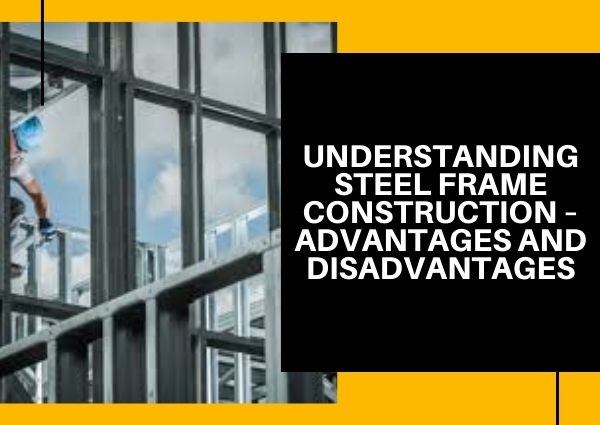Steel frame construction has become increasingly popular in recent years due to its durability, strength, and versatility. In this blog, we will explore the advantages and disadvantages of steel frame construction, helping you understand why it has become a preferred choice for many construction projects.
Advantages of Steel Frame Construction
- Strength and Durability: One of the primary advantages of steel frame construction is its strength and durability. Steel is a highly durable material that can withstand harsh weather conditions, earthquakes, and other external forces, making it ideal for long-lasting structures.
- Design Flexibility: Steel frames offer a high degree of design flexibility, allowing architects and builders to create unique and innovative structures. Steel can be easily shaped and molded into various shapes and sizes, making it suitable for a wide range of architectural styles.
- Speed of Construction: Steel frame construction is often faster than traditional construction methods. Steel frames are pre-engineered and fabricated off-site, reducing construction time and labor costs.
- Cost-Effective: While steel frame construction may have higher upfront costs compared to other materials, its long-term durability and low maintenance requirements make it a cost-effective choice over time.
- Fire Resistance: Steel is a non-combustible material, making it highly resistant to fire. This can help protect the structure and its occupants in the event of a fire.
- Environmental Benefits: Steel is a recyclable material, making it an environmentally friendly choice for construction projects. Using steel in construction can help reduce waste and conserve natural resources.
Disadvantages of Steel Frame Construction
- Cost: While steel frame construction can be cost-effective in the long run, it often has higher upfront costs compared to other materials. This can be a barrier for some construction projects with budget constraints.
- Susceptibility to Corrosion: Steel is susceptible to corrosion, especially in areas with high humidity or salt exposure. Proper maintenance and protective coatings are required to prevent corrosion and ensure the longevity of the structure.
- Insulation Issues: Steel is a good conductor of heat, which can lead to insulation issues in steel-framed buildings. Additional insulation may be required to maintain comfortable indoor temperatures.
- Complexity of Construction: Steel frame construction requires specialized knowledge and skills. Proper design, fabrication, and installation are essential to ensure the structural integrity of the building.
- Aesthetic Limitations: While steel offers design flexibility, some architects and builders may find it challenging to achieve certain aesthetic goals with steel frame construction. This can be a limitation for projects that require a specific architectural style or appearance.
Conclusion
Steel frame construction offers several advantages, including strength, durability, design flexibility, and speed of construction. However, it also has its disadvantages, such as cost, susceptibility to corrosion, insulation issues, complexity of construction, and aesthetic limitations. Overall, steel frame construction is a viable option for many construction projects, providing a durable and versatile building so

